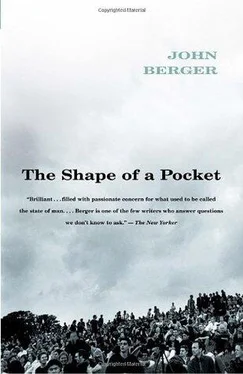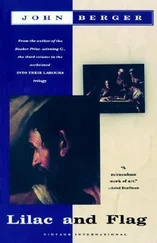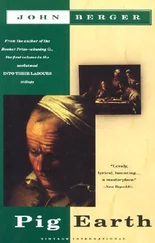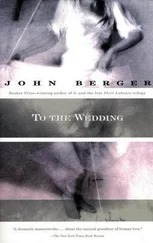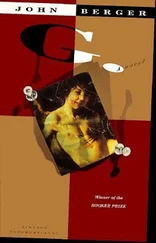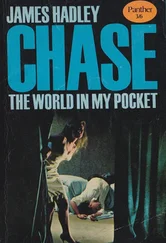One afternoon this man is searching in a shed beside the house for a metal file. He doesn’t find a file, but he comes upon a strong, obviously handmade, mousetrap. It consists of a plank of wood, 18cm. × 9cm., with a cage around it made of stout wire. The space between any two parallel wires is never more than half a centimetre. Enough for a mouse to poke its nose through but never enough to get its two ears through. The height of the cage is 8.5cm., so that, inside, a mouse can stand up on its strong hind legs, clutch the bars at the top with its four-fingered hands, and poke its snout between the wires of the ceiling, but it can never get out.
One end of the cage is a door which hinges upwards. A spiral spring is attached to this door. When the door is held open, the spring goes taut, ready to pull it back shut.
On top of the cage is a trip wire which fastens the door when open. The trip wire, however, extends beyond the doorframe by less than a millimetre. In wire-terms by a hair’s breadth! At the other end of the wire, inside the cage, is a hook on to which a piece of cheese or raw liver is fixed.
The mouse enters the cage to take a bite. No sooner does he touch the morsel with his teeth, than the trip wire releases the door and it slams shut behind him, before he can turn his head.
It takes the mouse several hours to realise that he is a prisoner, unhurt, in a cage measuring 18cm. by 9cm. After that, something in him never stops trembling.
The man takes the mousetrap into the house. He tests it. He fixes a lump of cheese on to the hook and places the trap on the shelf in the cupboard where the bread is kept.
Next morning the man finds a grey mouse in the cage. The cheese in the cage is untouched. Since the door was shut, the mouse lost his appetite. When the man picks up the cage, the mouse tries to hide behind the spring attached to the door. The mouse has jet black eyes which stare without blinking. The man places the cage on the kitchen table. The longer he looks into the cage, the more clearly he sees a resemblance between the sitting mouse and a kangaroo. There is a silence. The mouse becomes a little calmer. Then the mouse begins to circle the cage, testing again and again with one of his fingered forepaws the space between the wires, searching for an exception. The mouse tries biting the wires with his teeth. Then he sits back on his haunches, paws to his mouth. Rarely does somebody look at a mouse as long as the man does. Or vice versa.
The story is interrupted by voices from the Rue Delandine.
Tell Alex he has to send money.
I did.
Tell him if he doesn’t, he’ll burn.
I can’t hear you.
He’ll burn.
The man takes the cage to a field outside the village, places it on the grass and opens the door. It takes the mouse a minute to realise the fourth wall has disappeared. He tests the open space with his muzzle. Then he darts out, and scuttles to the nearest tuft of grass where he hides.
I’ll wait for you, Jacko. I love you, Jacko, I love you. However long, Jacko, I’m waiting.
The next day the man finds another mouse in the cage. He’s heavier than the first, but more agitated. Perhaps he is older. The man puts the cage on the floor and sits on the floor himself to watch. The mouse climbs on to the wires of the ceiling and holds himself there upside down.
Forgive me, Toni, can you hear me? Forgive me!
When the man opens the cage in the field, the old mouse runs away in a zig-zag line until he’s out of sight.
One morning the man finds two mice in the cage. It’s hard to say how much they are aware of each other, or to guess whether the presence of the other lessens or increases their mutual fear. One has larger ears, the other glossier hair. Mice resemble kangaroos because of the relatively enormous force of their hind legs, and the way their strong tails press against the ground for leverage when they leap.
Need to get a message to Jo-Jo.
Jo-Jo asks how you’re doing, Lenuta.
Tell him I’ll be working the lorry route from Warsaw next month if things don’t take a turn for the better.
Not good news.
Tell him he didn’t leave me much choice.
Take a pistol in your bag, Lenuta.
Tell him old peasant women sell blueberries along the same lorry route!
Don’t trust the Russians.
He’s crazy. That’s why he’s inside. Jo-Jo is crazy.
Lenuta!
In the field, when the man lifts the fourth wall, the two mice do not hesitate. They leave immediately, side by side, and take opposite directions, one going east and the other west.
Gilles! Can you hear me? Gilles, tell me if you can hear me. Gilles, I sent you a parcel today with all the grub you listed. Plus the mint chocolate you like …
Scarcely any bread in the cupboard has been eaten. The mouse, when the man picks up the cage, reacts with the usual panic, but moves more heavily. The man leaves the kitchen to take his mail and to chat for a moment with the postman. When he returns, there are nine newly born mice in the cage. Perfectly formed. Pink. Each one twice the size of a grain of long rice.
No, sir, do not wake up. Do not be disturbed. Remember this story is being told by a mother. Listen to her in your dream.
After ten days, the man asks himself whether some of the mice he has released in the field are not returning to the house. He decides, on reflection, that this is unlikely. He observes each one so closely that he is convinced that, should one return, he would recognise her or him immediately.
Harry! It’s me! I couldn’t come on Wednesday. Harry, I’m here tonight!
Harry asked me to tell you if you came. He’s been transferred to the hospital. He didn’t want to go. They took Harry to the hospital, chained his legs and took him.
The mouse in the cage holds his head on one side as if he was wearing a cap. His two front paws, with their four fingers, are planted firmly on the ground either side of his muzzle, like the hands of a pianist on a keyboard. His hind legs are tucked in close and extend along the ground so that they are almost under his ears. His ears are perked up, and his tail, stretched out far behind him, is pressed firmly on the floor of the cage. His heart’s beating very fast and he is frightened when the man lifts up the cage. Yet he doesn’t hide behind the spring; he doesn’t cringe. He holds his head acock, and he stares back. For the first time, a name for the mouse comes into the man’s head. Alfredo, he calls him. He puts the cage on the kitchen table beside his coffee cup.
Later the man goes to the field, kneels down, places the cage on the grass and holds the door, which is the fourth wall of the cell, open. The mouse approaches the open wall, raises his head, and leaps. He does not scuttle, he does not dart, he flies. Relative to his size, he leaps higher and further than a kangaroo. He leaps like a mouse who has been freed. With three leaps he has covered more than five metres. And the man, still on his knees, watches the mouse he called Alfredo leap again and again into the sky.
We’re going to begin again, honey, begin from scratch.
The following morning the bread has not been touched. And the man believes the mouse in the cage may be the last one. Kneeling in the field outside the village, holding the door open, the man waits. It takes the mouse a long while to realise he can leave. When he finally does, he scuttles into the thickest and nearest tuft of grass, and the man feels a slight yet sharp pang of disappointment. He had been hoping to see, one more time in his life, a prisoner fly, a prisoner realise his dream of freedom. He had hoped that there would be another Alfredo.
* * *
Monsieur le Maire, you are, I trust, still dreaming. The first step, if I understand it well, in your extensive plan for the rebuilding of the centre of Lyon (the plan to which you gave the magical name of Confluence), is the demolition of the prisons of St Joseph and St Paul.
Читать дальше
